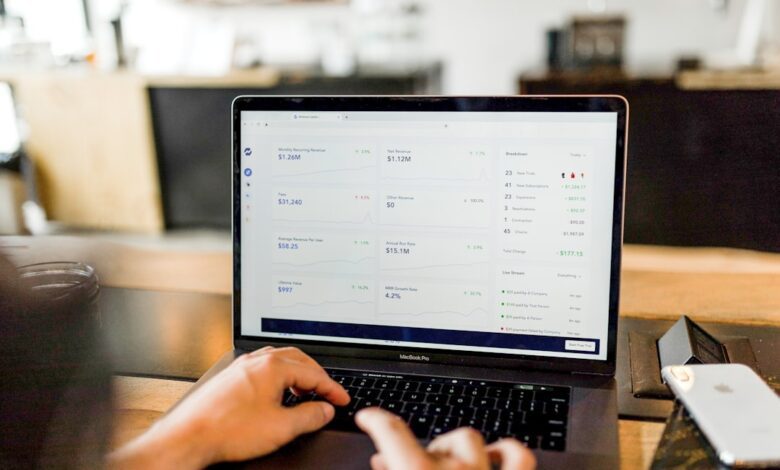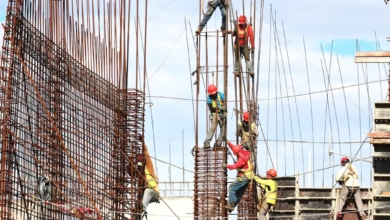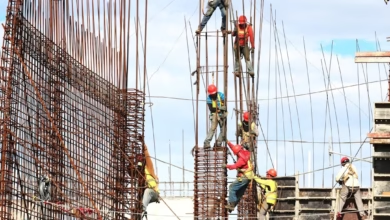Metals in Motion: Analyzing Industrial Demand, Investment Trends, and Economic Indicators

In today's rapidly evolving economic landscape, the role of metals extends far beyond mere commodities; they are pivotal to both industrial innovation and investment strategies. This article explores the multifaceted nature of metals, focusing on key players like silver, copper, and rare earth elements, and examines how their prices are intertwined with global economic trends and technological advancements. From silver's dual role as a vital industrial resource and an attractive investment asset to copper's reputation as an economic barometer, we delve into how these metals reflect and influence market dynamics. Additionally, we will consider the burgeoning demand for rare earth metals driven by the green energy revolution, compare the investment potential of platinum and palladium, and assess the impact of inflation and mining regulations on metal prices. Join us as we navigate the complexities of metal markets and their significance in diversifying investment portfolios and fostering a sustainable economy.
- 1. Silver's Dual Role: Navigating Industrial Demand and Investment Strategies
- 2. The Economic Barometer: How Copper Prices Signal Global Health
- 3. Green Energy Revolution: The Growing Demand for Rare Earth Metals
1. Silver's Dual Role: Navigating Industrial Demand and Investment Strategies
Silver plays a unique and multifaceted role in both industrial applications and investment strategies, making it a vital component of the global economy. As an industrial metal, silver is essential in various sectors, including electronics, solar energy, and medical technologies. Its high electrical conductivity and antibacterial properties make it indispensable for manufacturing components such as circuit boards, batteries, and photovoltaic cells. The growth of green technologies, particularly solar power, has significantly increased industrial demand for silver, creating a direct correlation between technological advancements and silver consumption.
On the investment side, silver is often seen as a hedge against inflation and economic uncertainty. Investors typically flock to silver during times of financial instability, viewing it as a safe haven similar to gold. The metal's relatively lower price point compared to gold makes it accessible to a broader range of investors, further enhancing its appeal. Silver's dual role as both an industrial commodity and an investment asset creates unique market dynamics, where price fluctuations can be influenced by both consumer demand and speculative trading.
In recent years, the interplay between these two aspects of silver has become increasingly pronounced. For instance, a surge in industrial demand can lead to higher prices, attracting investors looking to capitalize on upward trends. Conversely, economic downturns can dampen industrial consumption, potentially leading to decreased prices even in the face of strong investment interest. This duality necessitates a nuanced approach for investors, who must consider both the industrial landscape and broader economic indicators when evaluating silver's potential as an investment.
Ultimately, understanding silver's dual role is crucial for navigating its market. Investors who keep an eye on trends in industrial usage alongside macroeconomic factors will be better positioned to make informed decisions. As the demand for sustainable technologies continues to rise, silver's significance in both industrial and investment arenas is likely to remain strong, making it a key metal to watch in the evolving economic landscape.
2. The Economic Barometer: How Copper Prices Signal Global Health
Copper prices serve as a critical economic barometer, reflecting the overall health of the global economy. Often referred to as "Dr. Copper" due to its widespread applications and correlation with economic activity, the metal is a key indicator of industrial demand. Copper is essential in construction, electrical wiring, and manufacturing, making its price movements closely tied to economic growth.
When economies are thriving, demand for copper typically increases, leading to higher prices. For instance, during periods of robust infrastructure development or technological advancement, such as the construction of new buildings, roads, and renewable energy projects, copper consumption surges. Conversely, when economic downturns occur, demand wanes, resulting in falling copper prices. This inverse relationship highlights the metal's sensitivity to global economic cycles.
Additionally, copper prices are influenced by supply chain dynamics, geopolitical events, and currency fluctuations. For example, disruptions in major copper-producing countries, such as Chile and Peru, can lead to supply constraints, causing prices to spike. Similarly, changes in the value of the U.S. dollar can impact international copper prices, as commodities are typically priced in dollars.
Investors and analysts closely monitor copper price trends as part of their assessments of broader economic conditions. A rising copper price may signal expansion and increasing industrial activity, while a declining price could indicate economic contraction or reduced demand. This makes copper not only a vital industrial metal but also a critical indicator for economists and investors seeking to gauge global economic health.
3. Green Energy Revolution: The Growing Demand for Rare Earth Metals
The transition to green energy is driving an unprecedented surge in demand for rare earth metals, which are essential for various technologies that facilitate a sustainable future. These metals, including neodymium, dysprosium, and lithium, play critical roles in the manufacturing of high-performance magnets used in wind turbines, electric vehicles (EVs), and energy-efficient electronics. As governments and industries worldwide commit to reducing carbon emissions and investing in renewable energy sources, the reliance on these materials is expected to intensify.
The global push for electric vehicles, in particular, has significantly heightened the demand for rare earth metals. EVs require specialized batteries and motors that utilize rare earth elements to enhance performance and energy efficiency. The International Energy Agency (IEA) projects that the number of electric vehicles on the road will increase dramatically in the coming decades, further amplifying the need for these critical resources.
Moreover, as countries strive to achieve their climate goals, advancements in renewable energy technologies—such as solar panels and energy storage systems—are becoming increasingly vital. The production of these technologies often relies on rare earth metals, making them a cornerstone of the green energy revolution. However, the supply chain for rare earth metals is complex and often dominated by a few countries, particularly China, which poses risks related to geopolitical tensions and supply stability.
In summary, the growing emphasis on sustainable energy solutions is reshaping the landscape of rare earth metal demand. As industries continue to innovate and invest in green technologies, the reliance on these metals will likely increase, highlighting the importance of establishing secure and sustainable supply chains to support the global transition toward a greener economy.
In conclusion, the multifaceted landscape of metal markets reveals intricate connections between industrial demand, investment trends, and broader economic indicators. Silver's dual role underscores its significance in both manufacturing and as a safe-haven asset, while copper prices serve as a vital barometer for global economic health, reflecting shifts in industrial activity and consumer confidence. The rise of green energy technologies fuels an increasing demand for rare earth metals, highlighting the critical importance of these resources in the transition to sustainable energy solutions.
As the debate between platinum and palladium continues, investors must carefully consider the unique properties and market dynamics of each metal to make informed decisions. Furthermore, diversifying investment portfolios with metals offers a strategic approach to mitigate risks, particularly in an inflationary environment where precious and industrial metal prices can be significantly influenced.
Looking ahead, aluminum's role in a sustainable economy is poised for growth, driven by its lightweight properties and recyclability. However, the impact of mining regulations cannot be overlooked, as they play a crucial role in shaping market dynamics and metal prices. Overall, understanding these various factors is essential for investors and stakeholders aiming to navigate the complexities of the metal markets and capitalize on emerging opportunities in an evolving economic landscape.





